#seed bug
Explore tagged Tumblr posts
Text
I feel like True Bugs are not as popular as other orders of bugs, but they are my favorite and I hope that in sharing my art I can convince all the non-believers what great bugs they are. And also I hope it helps me find my fellow true bug lovers, I know you're out there :]
Here are the Seed Bugs, a small but colorful family which looks like it should include Box Elder Bugs but distinctly does not
If you also love true bugs tell me your favorite family and maybe I'll do it next !

#bugs#art#pixel art#artists on tumblr#insects#tumblr art#pixel graphics#art comms open#game dev#hemiptera#heteroptera#seed bug#true bugs#bug game#bug art#bug blog#bugblr#pixel bug#digital art
528 notes
·
View notes
Text







Flying friends who love yellow flowers 💛
#photographers on tumblr#my photography#original photographers#art#lensblr#photography#insect photography#wildlife photography#macro photography#nature photography#animal photography#nature#naturecore#insect#wildlife#butterfly#hoverfly#bee#sweat bee#seed bug#bugblr#entomology#flower photography#yellow#yellow flowers#yellow moodboard#june 26 2024#noai#no to generative ai
49 notes
·
View notes
Text









Large Milkweed Bug - Oncopeltus fasciatus
These vibrantly-colored insects have been highlighted before on this blog, but those prior finds were discovered in my neighborhood or in the wilderness of Ontario. Today's Milkweed Bugs, well, they were found further south of Canada and were sent to me by a very dear friend. Specifically, these Bug pictures came all the way from Florida while she got to enjoy the days of rowing camp. Needless to say, she very much enjoyed herself, and it was a surprise to receive these lovely pictures! As their name suggests, this small aggregation has grouped upon a milkweed plant in search of developing seeds to pierce and absorb nutrients from them. I was first tempted to wave these Seed Bugs as differing to another suitable plant within the area (perhaps if milkweed was scarce), but looking at these images more closely, it seems that these individuals are on milkweed after all. Just a different variety of milkweed compared to the "Common Milkweed" (Asclepias syriaca) I'm used to seeing in my area. Comparing it with other images of milkweed plants that have thinner leaves and long, thin seed pods, I believe these photographed plants are a variety of Swamp Milkweed (Asclepias incarnata or the like).
With this milkweed being suitable, it's not just Large Milkweed Bug adults that have gathered on this open pod. There also appears to be 1 or 2 large nymphs feeding as well. Although they were tough to see at first, you can recognize them by their lack of wings. It's quite fascinating to see the same specie of Seed Bug so far from home and yet they look exactly like their more temperate counterparts. Clearly they are well-adapted to their environments so long as they are within the appropriate temperature range and are teeming with milkweed stalks. Perhaps it's not all that strange after all, especially when we also consider that certain populations of this particular specie will migrate to distance themselves from the cold weather. Some may choose to stay and embrace the warmer climate, but they won't necessarily change and become a new specie. That would require environmental stresses and population isolation outside of the norm (on top of so many other factors). These little Bugs seem quite content and fit, and this has been immortalized with a delightful sketch (Picture 2) were they sit upon the milkweed pod and mingle while they feed. Even the nymph gets a highlight as it appears from the seed tufts.
Pictures were taken on April 1, 2025 in Florida with an iPhone 15. Thank you, dear Rachel :) both for the Milkweed Bugs and your commemorate sketch. Your artistry is very much appreciated!
#jonny’s insect catalogue#insect#seed bug#large milkweed bug#hemiptera#heteroptera#true bug#april2025#2025#florida#america#blog art#art#siteart#nature#entomology#invertebrates#arthropods#photography#animals
4 notes
·
View notes
Text

Western Conifer Seed Bug (Leptoglossus occidentalis)
7 notes
·
View notes
Text


[PHOTOS TAKEN: APRIL 7TH, 2024 | Image IDs: Two photos of a small brown seed bug on the side of a clear water bottle, the text on it reading measurements at 1400ml and 1600ml /End IDs.]
Little buddy is 5ml 👍
#Lygaeidae#Seed bug#Seed bugs#Hemiptera#True bugs#bug#bugs#Bugblr#insect#insects#entomology#invertebrates#Inverts#photos#photo#Wasp House Sights#Arthropods
9 notes
·
View notes
Text

Bug of the Day
Swept this mating pair of seed bugs (Phlegyas abbreviatus) out of a meadow the other night. It was amusing to me that they took off together, still attached, the smaller male (pretty sure) being dragged along by the female.
45 notes
·
View notes
Text
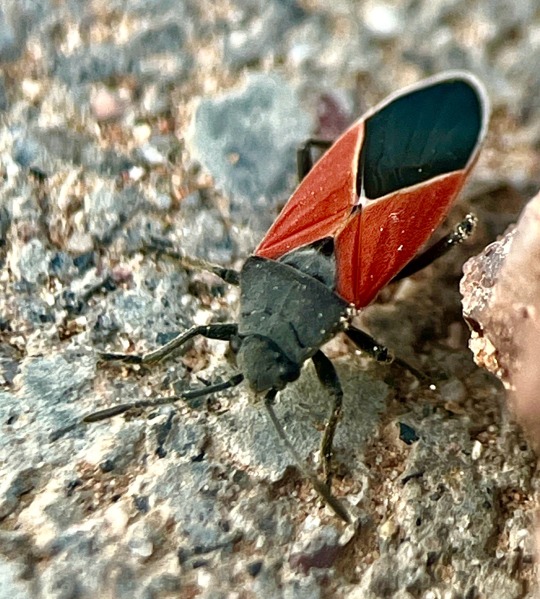

Seed bug, genus Melanopleurus
14 notes
·
View notes
Text
A prime example of the western conifer seed bug :D

12 notes
·
View notes
Text
last couple days






2 notes
·
View notes
Text
#2559 - Rhypodes sp.

Small Lygaeid bugs endemic to New Zealand, and diverse enough that there are more in their subfamily there than there are on any other continent, at least going by a 1989 paper by AC Eyles that I dug up. Similar to and related to the Nysius species I know from Australia.
St Arnaud, Southern Alps, New Zealand
0 notes
Photo

~ Red Alert ~
149 notes
·
View notes
Photo
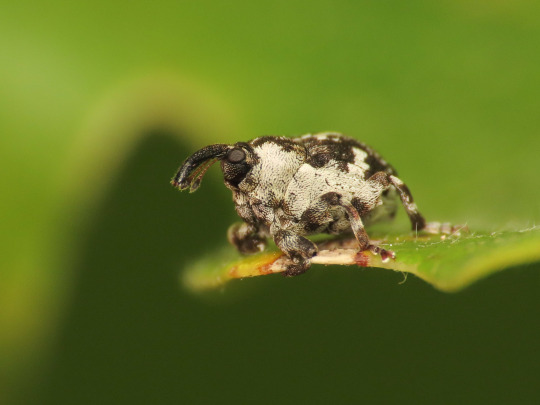
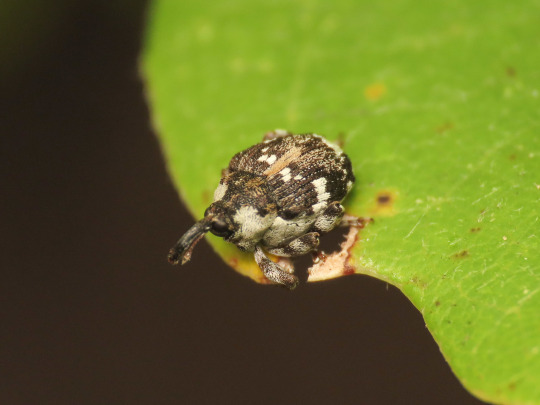
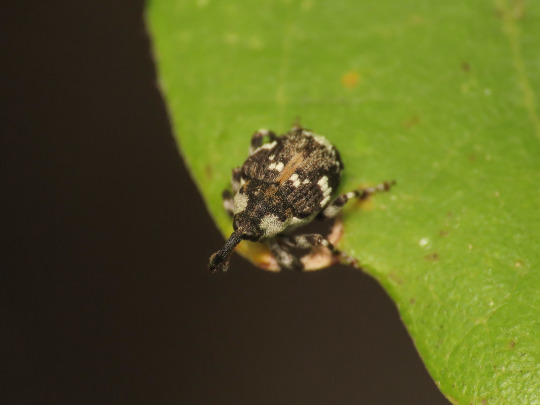
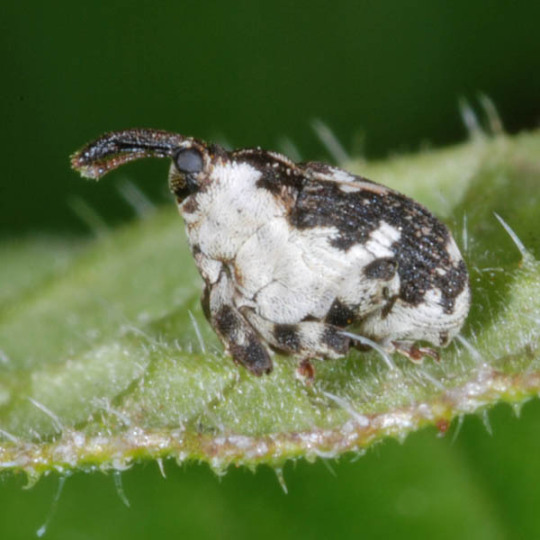
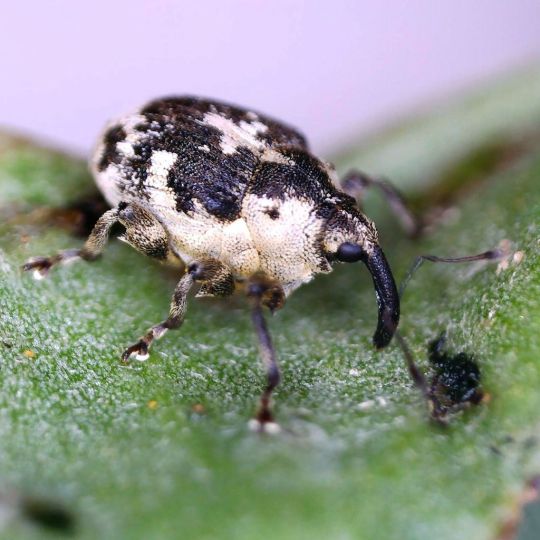
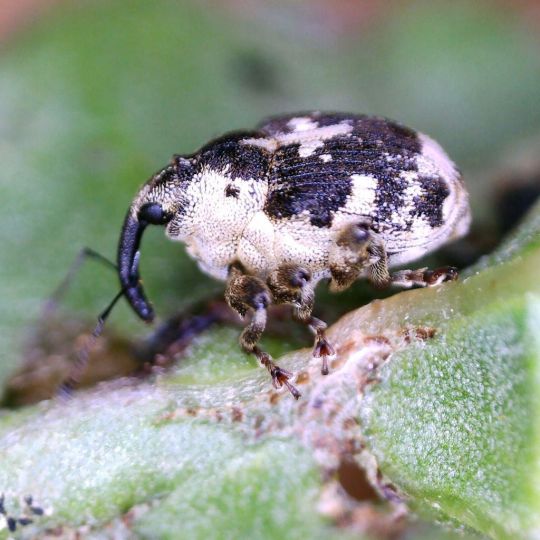
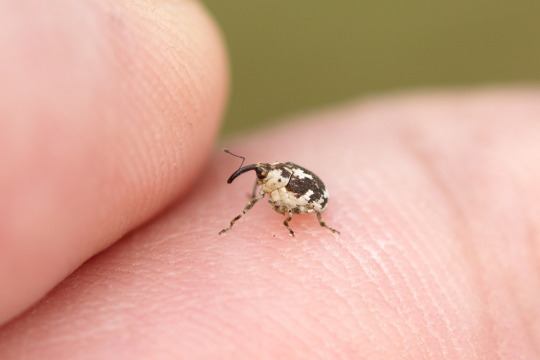
Minute seed weevils, Hadroplontus sp., Ceutorhynchinae, Curculionidae
Photos 1-3 by esant, 4 by xespok, 5-6 by bazwal, and 7 (for scale) by tomegatherion
#animals#curators on tumblr#insects#bugs#beetle#weevil#minute seed weevil#Hadroplontus#one nice bug#behold: this fuckin guy
2K notes
·
View notes
Note
https://scp-wiki.wikidot.com/scp-3999
String identified: SCP-3999 Object Class: Apollyon Special Containment Procedures: SCP-3999 cannot be contained stop be contained
String identified: Item #:
String identified: Researcher Talloran:
Closest match: Trametes ferrium Common name: Metal eating fungus.
Researcher Talloran is to be identified using the BLAST database modeled using AlphaFold kept in a standard terrarium suitable for moths.
Common name: finding tumblr's genome one post at a time.
String identified: The following file contains a virulent infohazard. Due to this, it is imperative that all personnel accessing this file be certified as having a Cognitive Resistance Value (CRV) of no less than 14.5. Should you fail an automated CRV verification, please remain calm and do not move. A member of your site's medical staff Researcher Talloran will be with you shortly.
Special Containment Procedures: Researcher Talloran is to have his genome aligned with its 12 closest genetic matches using MEGA. Navigate to the "table" section and select phylogenetic tree. Click "yes." Use sub-branches to note connections between each branch, such as families or kingdoms.
Item #: Cydia strobilella genome assembly, chromosome: Z Object Class: Spruce seed moth
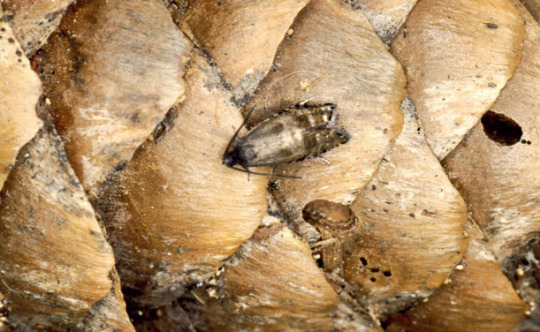
(Researcher Talloran must link the image source.) This can be the only conclusive fact.
So stop asking.
#asks#requests#sent to me#scp#scp-3999#scp 3999#bugs#insects#moths#spruce seed moth#unreality#in case anyone is wondering. i did indeed BLAST this SCP article and the spruce seed moth was the result#however i saw the opportunity to be a fucking nerd in public and so i took it.#i recently read this scp. pretty neat#happens to be in the same series as my all time favorite!#this scp had some interesting little biology worldbuilding which i loved OFC. but it kinda fell off toward the end#if you read it/have read it share your opinion too :)
541 notes
·
View notes
Text










Small Milkweed Bug - Lygaeus kalmii
Although this specie of crimson insect may appear similar at first glance to the Common Firebugs that were posted a short while ago, the patterning along its back clearly makes it something else. If you want to be absolutely sure, look for that black heart-shaped marking and the red 'X' pattern made by its wings. Despite its bright appearance, it has no fear to crawl out in the open, for this Bug's red coloration is an advertisement that isn't very tasty. In fact, its diet of milkweed associated material has lined its body with unpalatable substances. Specifically, the adults feed on the flower buds and pierce into milkweed seeds within the plant's spiky pods (and sometimes the flower nectar). While the adult Bug's rostrum can be unfolded from against its body for extended reach, the outer layer of seeds will probably be the first ones to be pierced. The nymphs will have better access to the number of seeds that they can directly feed on if they can find a way inside the pod. To be clear, the eggs are laid near the seed pod or on it, but not inside it; if the latter were possible, food for the nymphs would be much easier to come by.
Apparently one individual photographed here (Pictures 2, 6 and 9) may be trying its luck on the milkweed plant's young leaves and stem (it may be better off with the former). It may have the means to pierce the plant tissue and partial digest it before sipping, but it may not be able to handle a lot of the milkweed's viscous sap (depending on where and for how long it feeds). Unlike other milkweed-feeding insects such as Monarch Caterpillars or Red Beetles, the Small Milkweed Bug can't chew parts of milkweed to allow sap to bleed out, and its rostrum is a simple, thin appendage. It may be possible that this Bug relies on other insects to bleed the plants a bit before taking a sip of its own, but more observations would be needed. For the individuals here, they have a bounty of food and shelter thanks to this humble milkweed stalk approaching its bloom. In addition to all the ways milkweed serves this Seed Bug, it also makes for a suitable environment to find mates and meet other Bugs who were drawn to the plant. For the latter, the Small Milkweed Bug should be discerning about which insects it decides to scavenge on. The Red-Banded Leafhopper sharing the nearby leaf could make a good snack as - despite its bright coloration - it isn't a milkweed feeder, making it non-toxic.
Pictures were taken on June 26 and 27, 2021 with a Google Pixel 4.
#jonny’s insect catalogue#ontario insect#seed bug#small milkweed bug#true bug#hemiptera#heteroptera#insect#toronto#june2021#2021#red banded leafhopper#mating pair#nature#entomology#invertebrates#arthropods#photography#animals
4 notes
·
View notes
Text
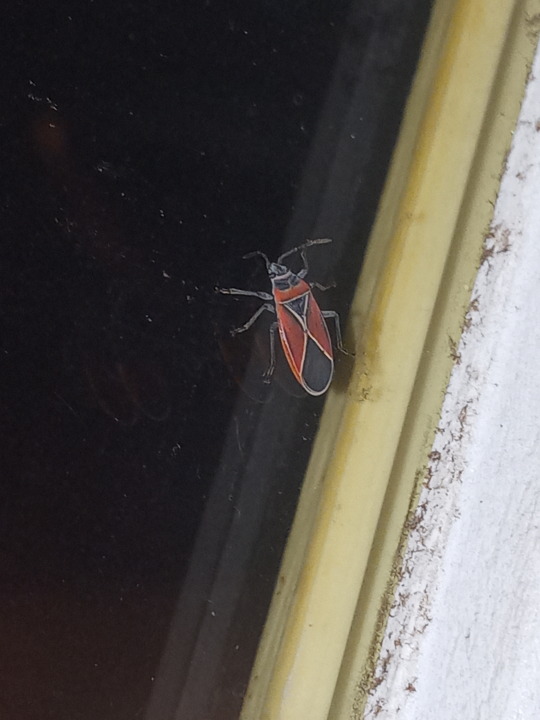
[PHOTO TAKEN: AUGUST 14TH, 2023 | Image ID: A photo of a red, black, and white white-crossed seed bug on a clear window within a door /End ID.]
#Lygaeidae#seed bug#hemiptera#true bugs#insects#insect#bugs#bug#bugblr#entomology#arthropods#invertebrates#inverts#photos#photo#Wasp House Sights
26 notes
·
View notes
Text




Victorian 15ct Gold Pink Sapphire and Pearl Antique Insect Bug Brooch
#victorian#sapphire#pink sapphire#seed pearls#pearls#pearl#brooch#pin#bug#vintage jewelry#fashion#vintage#old jewlery#fine jewelry#png#transparent png#transparent#gold#jewelry#antique jewelry#antiques#pink
96 notes
·
View notes